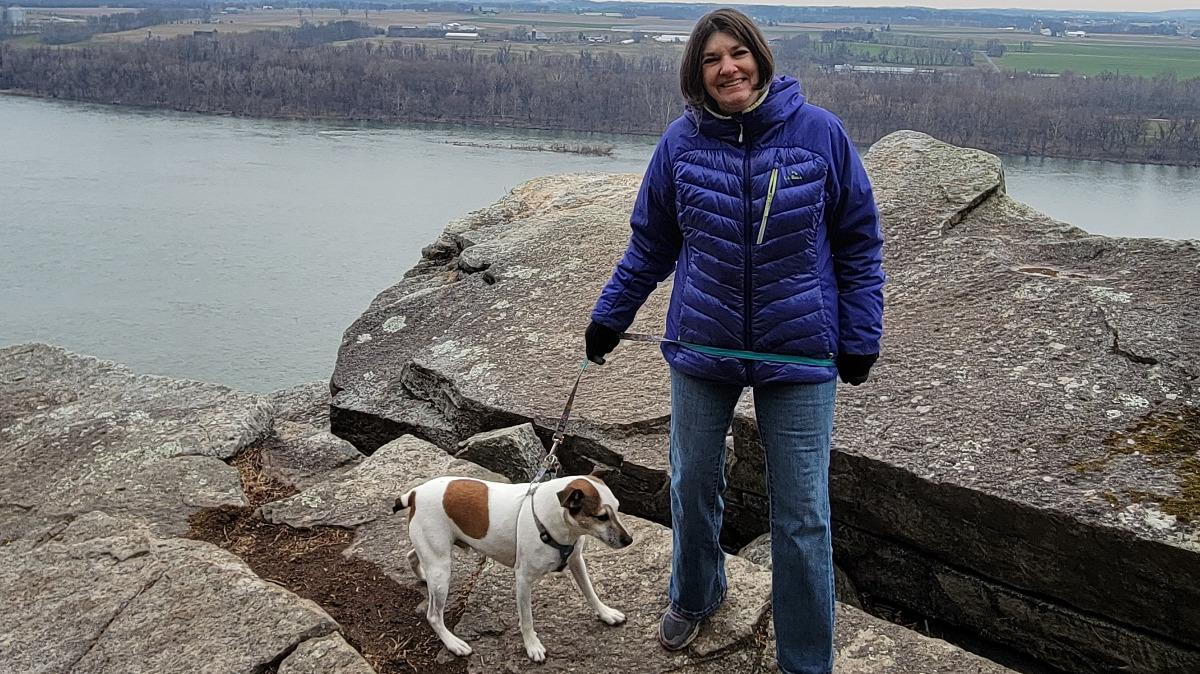Walking Your Dog May be Hazardous to Your Health!

- posted: May 21, 2023
Walking Your Dog May Be Hazardous!
Taking your dog for a walk is a great way to not only bond with your furry friend but also to stay fit and get exercise for both you and your pet. But, a long-term study by Medicine & Science in Sports & Exercise has shown a rise in human injuries sustained when walking dogs. Let’s learn more about the findings and how to keep you, and your dog, safe when walking.
Walking a dog may seem like an easy task, but the Johns Hopkins study found “an estimated 422,659 adults sought treatment in U.S. emergency rooms for injuries resulting from leash-dependent dog walking from 2001 to 2020.” The most common injuries included broken fingers, traumatic brain injury such as concussion and shoulder strain. Adults over the age of 65 had a three-fold increase in falls and women had a 50% higher incidence of sustaining a fracture than men.
Here are some tips to stay safe when strolling through the neighborhood or taking a hike with your pup.
- Don’t wrap the leash around your fingers. While this may seem more secure, if your dog decides to sprint after a squirrel, he could take you down and, if the leash is tangled in your fingers, cartilage, ligament and tendon damage and fractures can occur. Hold the end of the leash flat in your palm.
- Keep the leash short. Long leads and flexi-leads seem like a way to give your pooch a bit more free reign to explore. But, an excited dog at the end of a long lead builds up a lot of energy. One quick yank at the end of the lead and your dog could end up dragging you or the sudden pull could cause a dislocated wrist or shoulder. Long leashes also pose more of a tripping hazard if the dog wraps around you. Shorten the leash to 4-6 feet while walking. It’s OK to give a little more leeway if you’re stopping to let your pup sniff or take a break.
- Wear appropriate footwear. The more sure-footed you are in sneakers or hiking boots, the less likely you are to fall, especially if hiking or walking on uneven terrain with your dog. Injuries are more likely to occur if you are wearing flip flops or other unstable shoes.
- Pay attention to your dog and your surroundings. This is the most important thing to remember when walking your dog. This is time alone with your pet, enjoy it! Stay alert for potential things that may attract or frighten your dog such as cars, approaching people or dogs or other animals (Squirrel!). If you are paying attention to where you and your dog are walking, you can also avoid potential obstacles and are less likely to stumble. If a situation does arise, you’ll be more apt to react and correct the situation instead of being caught off guard.
Walking your dog remains a great way to stay active and to enjoy time with your pet. By keeping your dog on a shorter leash, keeping the leash in your palm not wrapped around your fingers, wearing appropriate shoes and paying attention to your dog and your surroundings, you can have a safe and fun walk with your pet and not sustain any serious injuries!
This blog brought to you by the Patton Veterinary Hospital serving Red Lion, York and the surrounding communities.
Location
Patton Veterinary Hospital
425 E Broadway
Red Lion, PA 17356
